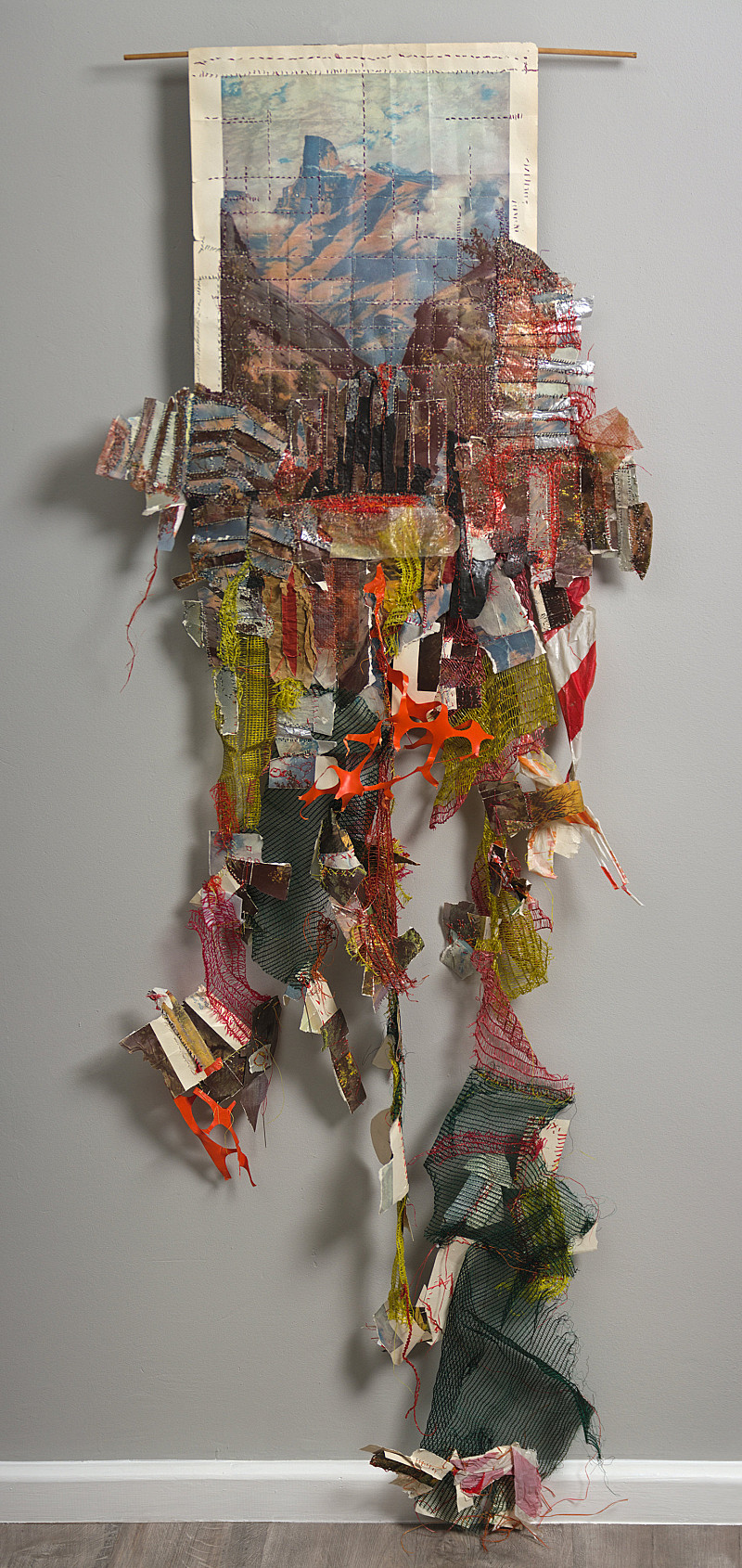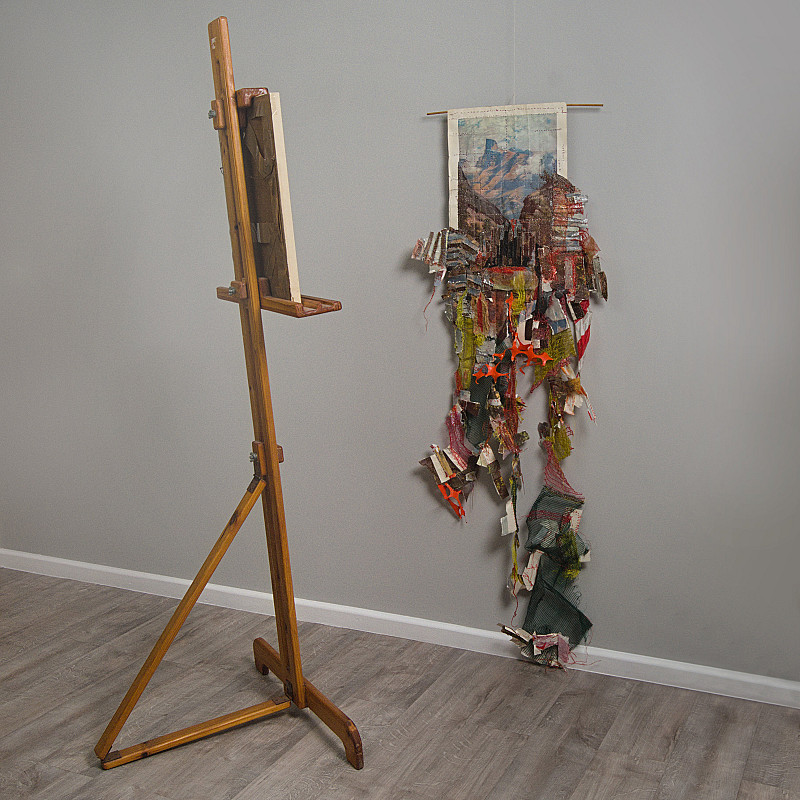- Imagine Sisyphus
- Annemi Conradie-Chetty
- 2023
- Mixed media, vintage print, found objects, various plastic & thread
- Certificate of Authenticity Provided
"The installation consists of two parts. The first part is a framed, slightly altered vintage print of South African artist WH Coetzer’s oil painting 'The Sentinel, Mont-aux-Sources, Natal' (1943). The painting is of an iconic peak in the Drakensberg, bordering Lesotho. It was named ‘Mont-aux-Sources’ (Mountain of Sources) in 1836 by French missionaries T Arbousset and F Daumas, identifying it as the source of the Orange, Vaal, and Tugela rivers when they supposedly scaled the peak. The narrative of its naming that developed around their ascent, blurs fact and fiction, feeding into myths about colonial discovery.
I identify WH Coetzer’s painting as another chapter or layering of the myth of the mountain, and the summit was known as Phofung, or ‘place of the eland’. Coetzer’s work is closely associated with Afrikaner Nationalism: he received numerous commissions to commemorate Voortrekker history, including in 1938, to design friezes and tapestries for the Voortrekker Monument in Pretoria. The painting employs traditional formal devices to frame the mountain as sublime landscape, offering a visual passage through the dark rocks in the foreground to the imposing peak.
My appropriation, dissemblance and (re-)mixing of Coetzer’s work with urban waste material is motivated by my desire to draw links between settler colonial occupation of African land, the grand narrative of progress and the contemporary climate catastrophe. In the first work, the iconic mountain peak has been moved slightly, as though it has shifted from its foundation. The easel and framed print are positioned adjacent to a second print, which has been radically altered through cutting, folding, tearing, and stitching. In the exploded landscape, I’ve imagined Mont-aux-Sources as the site of open-pit mining, disintegrating and polluted as it is mined for the metals and coal that are crucial for the South African economy.
The second print has been extensively deconstructed and reconstructed through cutting and mending with fibers and debris found in South African streets, building sites and agricultural land. The breakdown and interruption of the sublime landscape painting through the various collage processes and found materials, create a scene that evokes erosion, open-pit mining, and landslides. In this sense, the appropriated and reworked painting becomes an allegory for environmental degradation in the capitalocene.
Trying to ‘fix’ the torn picture with needle and thread is complicated by the fragility of the brittle paper: the needle and thread tear and break the paper and picture surface as one tries to sew and mend. The sewing process resembles the efforts of Sisyphus, condemned for eternity by the gods to push a boulder up a mountain only to have it roll down once he reaches the top. As Albert Camus writes, the process is an allegory for struggle and revolt in the face of life’s absurdity. I draw a comparison between Sisyphus’s efforts and those of people and communities who work - despite insurmountable obstacles and setbacks - to mitigate environmental degradation and destruction. "





